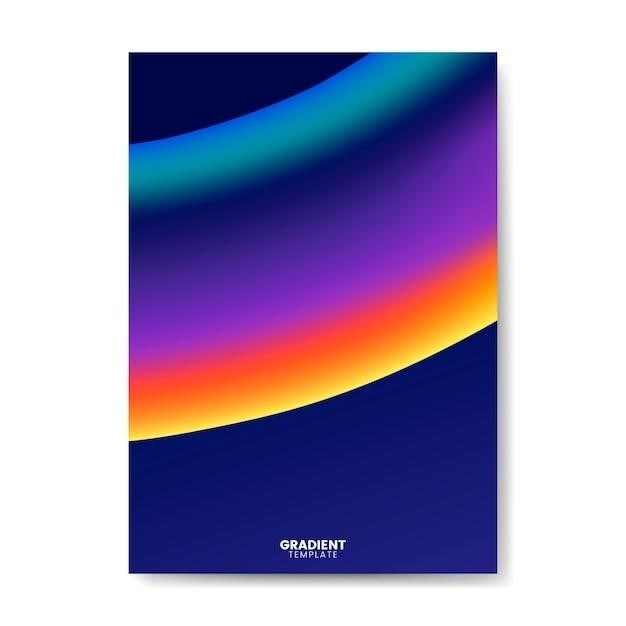
blue is the warmest color pdf
Availability of “Blue Is the Warmest Color” PDF
Several online sources offer “Blue Is the Warmest Color” as a PDF. Files vary in size (from 949 KB to 26.9 MB) and may differ slightly in format. Free downloads are readily available.
Online Sources for Downloading the PDF
Locating a PDF of “Blue Is the Warmest Color” online involves navigating various platforms. While specific websites weren’t explicitly named in the provided text, the frequent mention of “download free PDF” and links to sites like Scribd strongly suggest the availability on numerous document-sharing and ebook platforms. These platforms often host user-uploaded content, meaning the availability and legality of specific PDFs may vary. Some sites may offer the graphic novel in its entirety, while others might feature excerpts or reviews. Therefore, a thorough search across multiple online resources is recommended to find a reliable and legally sound PDF version of Julie Maroh’s work. Remember to always respect copyright laws when accessing and downloading digital content.
File Sizes and Formats of Available PDFs
The provided text indicates a range of file sizes for available PDFs of “Blue is the Warmest Color,” highlighting the variability depending on the source and version. Sizes mentioned include 949.1 KB, 1.3 MB, 1.8 MB, and a significantly larger 26.9 MB. This variation likely stems from differences in image resolution, text compression, and potentially the inclusion of extra materials like introductions or bonus content. The format is consistently listed as PDF, suggesting a common standard for digital distribution. However, the text doesn’t specify whether these are scanned versions of the print edition, digitally created files, or other variations. Users should be aware that larger files generally offer higher image quality but require more storage space and potentially longer download times.
The Graphic Novel’s Content
This graphic novel tells a lesbian love story, following Clementine and Emma’s relationship, exploring themes of self-discovery and love’s complexities.
Synopsis of the Story
Julie Maroh’s graphic novel, “Blue Is the Warmest Color,” centers on Clementine, a young woman navigating adolescence and the complexities of self-discovery. Her life takes a transformative turn when she encounters Emma, a confident, blue-haired young woman. Their connection blossoms into a passionate and deeply intimate relationship, marked by both exhilarating highs and heart-wrenching lows. The narrative unfolds as a coming-of-age story interwoven with a powerful exploration of love’s transformative power, encompassing the joys, challenges, and inevitable changes inherent in a profound romantic connection. The story charts the evolution of their bond, from initial attraction to the deepening emotional and physical intimacy that defines their relationship. It’s a journey of self-discovery for Clementine, as she grapples with her identity and the profound impact Emma has on her life. The narrative offers a poignant and honest portrayal of a lesbian relationship, showcasing its nuances and complexities with sensitivity and realism. It delves into the emotional intensity, vulnerabilities, and transformative power of love, leaving a lasting impact on the reader.
Character Development⁚ Clementine and Emma
Clementine’s journey is one of self-discovery, evolving from a somewhat uncertain teenager to a woman confidently embracing her sexuality and identity. Initially hesitant and unsure, she blossoms under Emma’s influence, experiencing a profound personal transformation as she navigates the complexities of their relationship. Emma, in contrast, is portrayed as more self-assured and experienced, providing a grounding presence for Clementine while also grappling with her own emotional complexities. The narrative showcases the contrast between their personalities, highlighting the dynamics of their relationship and how their individual growth intertwines. Both characters experience significant personal growth throughout their relationship, facing challenges and evolving in response to both the joys and hardships they encounter together. Their development is not always linear; it’s a process of learning, adapting, and ultimately, transforming as individuals and as a couple. The depth of their character arcs adds richness and realism to the narrative’s exploration of love and self-discovery.
Themes Explored in the Narrative
Central to “Blue Is the Warmest Color” is the exploration of first love’s intensity and the transformative power of romantic relationships. The narrative delves into the complexities of female sexuality and the societal pressures faced by LGBTQ+ individuals. It doesn’t shy away from portraying the messy realities of relationships, including the challenges of communication, compromise, and navigating differing desires and needs. Themes of self-discovery and personal growth are interwoven throughout the story, as the characters confront their identities and grapple with self-acceptance. The graphic novel also subtly touches upon societal expectations and the impact of external judgments on intimate relationships. Ultimately, the story is a poignant exploration of love’s transformative capabilities, its ability to both exhilarate and challenge, and its profound impact on personal growth and self-understanding within the context of a specific cultural landscape.

Film Adaptation and Reception
The film adaptation of Julie Maroh’s graphic novel won the Palme d’Or at Cannes in 2013, garnering significant critical acclaim and sparking widespread discussion.
The Palme d’Or Award and Critical Acclaim
The film adaptation of “Blue Is the Warmest Color,” directed by Abdellatif Kechiche, achieved significant recognition at the 2013 Cannes Film Festival. Its win of the prestigious Palme d’Or, the festival’s highest award, immediately propelled it into the international spotlight. The film’s unflinching portrayal of a lesbian relationship, its explicit depiction of intimacy, and its nuanced exploration of complex emotions ignited both fervent praise and considerable controversy. Critics lauded its bold visuals, its immersive storytelling, and the powerful performances of Léa Seydoux and Adèle Exarchopoulos, who embodied the central characters with remarkable authenticity. However, the film’s graphic nature and lengthy runtime also drew criticism from some quarters. Despite the mixed reactions, the Palme d’Or win solidified “Blue Is the Warmest Color’s” place as a significant and impactful cinematic achievement, sparking substantial critical debate and scholarly analysis.
Comparison Between the Graphic Novel and Film
Julie Maroh’s graphic novel, “Blue Is the Warmest Color,” serves as the source material for Kechiche’s film adaptation. While the film broadly follows the novel’s narrative arc – charting the passionate relationship between Clementine and Emma – key differences exist. The film expands upon certain aspects of the characters’ lives and relationships, providing greater depth and detail to their emotional journeys. The graphic novel’s visual style, characterized by its intimate and expressive linework, is translated into the film’s cinematography, but the cinematic medium allows for a more dynamic and visceral portrayal of emotion. The film’s runtime allows for a more expansive exploration of the characters’ internal lives and external experiences, whereas the novel relies more on concise storytelling and visual metaphor. The adaptation, therefore, presents a richer, more complex narrative, but also adds elements not present in Maroh’s original work, leading to interesting points of comparison and contrast between the two versions of the story.
Impact and Legacy of the Film
Abdellatif Kechiche’s film adaptation of “Blue Is the Warmest Color” generated significant controversy and critical acclaim upon its release. Its graphic depiction of lesbian sexuality sparked both praise for its unflinching realism and criticism for its perceived exploitative nature. The film’s Palme d’Or win at Cannes further fueled debate, highlighting its artistic merit while simultaneously intensifying discussion surrounding its representation of intimacy. Regardless of the controversy, the film undeniably impacted discussions of LGBTQ+ representation in cinema. It pushed boundaries concerning the portrayal of female sexuality and same-sex relationships, prompting conversations about authenticity, consent, and the ethical considerations of filmmaking. Its legacy continues to be debated, yet its influence on subsequent cinematic portrayals of lesbian relationships remains undeniable. The film’s success also brought increased attention to Maroh’s graphic novel, solidifying its status as a significant work within LGBTQ+ literature.

Academic Analyses of the Work
Scholarly articles explore themes of class, queerness, and the intersections of gender, race, and sexuality within “Blue is the Warmest Color,” both the graphic novel and film adaptation.
Class Relations as a Central Theme
Academic discourse surrounding “Blue is the Warmest Color” frequently highlights the subtle yet pervasive exploration of class dynamics. While not explicitly foregrounded, the characters’ socioeconomic backgrounds and the environments they inhabit subtly shape their experiences and relationships. Clementine’s initial naiveté and Emma’s more established self-assurance, for instance, can be interpreted through a class lens, reflecting differing levels of access to resources and social capital. The film’s depiction of their evolving relationship, marked by both intense passion and eventual disillusionment, can be analyzed as a commentary on how class disparities can impact even the most intimate connections. Furthermore, the narrative’s exploration of societal expectations and the challenges faced by individuals navigating their identities within specific social structures further underscores the importance of class as a contextualizing factor in understanding the story’s complexities. The contrast between their lifestyles and the choices available to them highlights how social class, often unseen, underpins the narrative’s emotional arc.
Queerness and Subversion of Normativity
A key aspect of “Blue is the Warmest Color” lies in its unflinching portrayal of a lesbian relationship, challenging heteronormative representations prevalent in mainstream media. The graphic novel and subsequent film adaptation delve into the complexities of same-sex love, showcasing the intimacy, passion, and conflicts inherent in any relationship, regardless of sexual orientation. By centering a lesbian romance, the narrative implicitly subverts societal norms that often marginalize or misrepresent LGBTQ+ experiences. The characters’ journey of self-discovery and the exploration of their evolving connection are presented with nuance and authenticity, fostering a sense of relatability and challenging stereotypical portrayals often found in media. The work’s impact stems from its honest depiction of a lesbian relationship, thereby contributing to a wider representation of queer identities and challenging heteronormative expectations in a significant way.
Intersections of Gender, Race, and Sexuality
While the provided text focuses primarily on the lesbian relationship at the heart of “Blue is the Warmest Color,” a deeper analysis could explore the intersections of gender, race, and sexuality within the narrative. The characters’ experiences are shaped by their identities, and the story could be interpreted through the lens of how these identities interact and influence their lives. Further investigation might reveal how societal norms and expectations related to gender, race, and sexuality impact the characters’ choices and relationships. The absence of explicit detail regarding race in the provided excerpts doesn’t preclude a nuanced discussion; the analysis could examine how the power dynamics inherent in the relationship might be understood in relation to broader societal power structures based on gender and sexuality, even without explicit racial identifiers. A more in-depth examination of the text could unveil further complexities.
Further Reading and Resources
For related academic articles and books, consult journals like Journal of British Cinema and Television and CinémaCie International Film Studies Journal.
Related Books and Articles
Academic exploration of “Blue Is the Warmest Color” extends beyond the graphic novel itself. Several journals delve into its themes, including the Journal of British Cinema and Television, which analyzes color’s role in social realism within film. CinémaCie International Film Studies Journal offers perspectives on color theory in film and its expressive use, providing a valuable counterpoint to the graphic novel’s visual storytelling. Furthermore, articles within The Journal of Aesthetics and Art Criticism and Representations of Social Inequality in 21st Century Global Art Cinema offer critical analyses of the work’s social and cultural impact. These resources offer diverse viewpoints on the novel’s exploration of class, queerness, and the intersection of gender, race, and sexuality, enriching understanding beyond the narrative itself. The Palgrave Handbook of Ethnicity and The Bloomsbury Handbook on Sofia Coppola also provide relevant contextual information. These resources provide a deeper understanding of the novel’s themes and their broader significance within film and literary studies.

